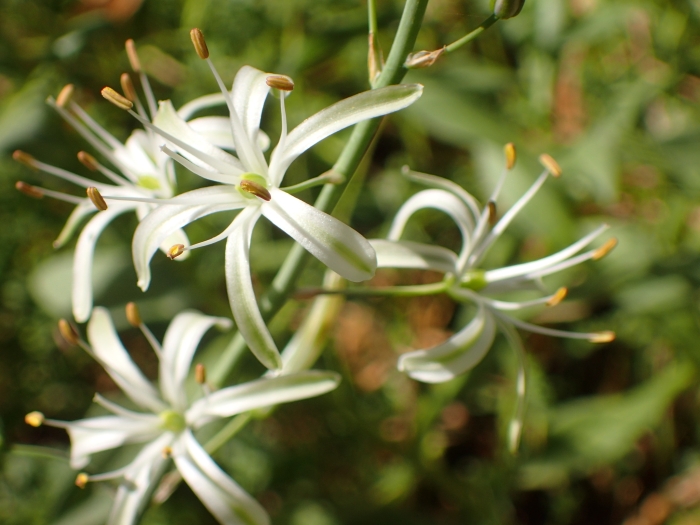Wavyleaf Soap Plant
(Chlorogalum pomeridianum)
Wavyleaf Soap Plant (Chlorogalum pomeridianum)
/
/

George Williams
CC BY 4.0
Image By:
George Williams
Recorded By:
Copyright:
CC BY 4.0
Copyright Notice:
Photo by: George Williams | License Type: CC BY 4.0 | License URL: http://creativecommons.org/licenses/by/4.0/ | Rights Holder: George Williams | Publisher: iNaturalist | Date Created: 2021-06-21T15:35:55-07:00 |
























































Estimated Native Range
Summary
Chlorogalum pomeridianum, commonly known as Wavyleaf Soap Plant, is a deciduous perennial herb that is native to a variety of habitats including chaparral, grasslands, and open woodlands in California and Oregon. It typically grows to a height of 1-2 feet and a width of 2-3 feet. The plant is characterized by its bulb, which is brown, between 7 and 15 cm in diameter, slightly elongated, and covered in thick, coarse fibers. The basal leaves are long, ranging from 20 to 70 cm, and narrow, between 6 to 25 mm wide, with wavy margins that give the plant its common name. Flowering occurs from late spring to early summer, with flowers borne on a tall stem that exceeds the length of the leaves. The flowers, which are up to 35 mm long, have six tepals (three petals and three sepals that look similar), typically white with a distinctive mid-vein that can be purple or green. They exhibit a unique behavior of opening in the late afternoon or evening and closing by the morning, adapted for pollination by evening- or night-flying insects.
The Wavyleaf Soap Plant is valued for its drought tolerance and its ability to thrive in a range of soil types, from slow to fast drainage. It is an excellent choice for naturalistic plantings, rock gardens, and native plant gardens, where its evening-blooming flowers can add interest. The plant’s bulbs have historically been used by Native Americans as a soap substitute, hence the name. While it is generally low-maintenance, it can be susceptible to bulb rot if overwatered. It is best grown in full sun to part shade and requires moderate watering, especially during its active growth in spring and early summer.CC BY-SA 4.0
The Wavyleaf Soap Plant is valued for its drought tolerance and its ability to thrive in a range of soil types, from slow to fast drainage. It is an excellent choice for naturalistic plantings, rock gardens, and native plant gardens, where its evening-blooming flowers can add interest. The plant’s bulbs have historically been used by Native Americans as a soap substitute, hence the name. While it is generally low-maintenance, it can be susceptible to bulb rot if overwatered. It is best grown in full sun to part shade and requires moderate watering, especially during its active growth in spring and early summer.CC BY-SA 4.0
Plant Description
- Plant Type: Herb
- Height: 1-2 feet
- Width: 2-3 feet
- Growth Rate: Slow
- Flower Color: Green, White
- Flowering Season: Fall, Spring, Summer
- Leaf Retention: Deciduous
Growth Requirements
- Sun: Full Sun
- Water: Medium
- Drainage: Slow, Medium, Fast
Common Uses
Bee Garden, Butterfly Garden, Drought Tolerant, Low Maintenance, Rock Garden
Natural Habitat
Native to chaparral, grasslands, and open woodlands in California and Oregon
Other Names
Common Names: California Soaproot, Amole
Scientific Names: , Chlorogalum pomeridianum, Chlorogalum pomeridianum var. pomeridianum, Laothoe pomeridiana, Scilla pomeridiana, Anthericum pomeridianum, Phalangium pomeridianum,
GBIF Accepted Name: Chlorogalum pomeridianum (DC.) Kunth